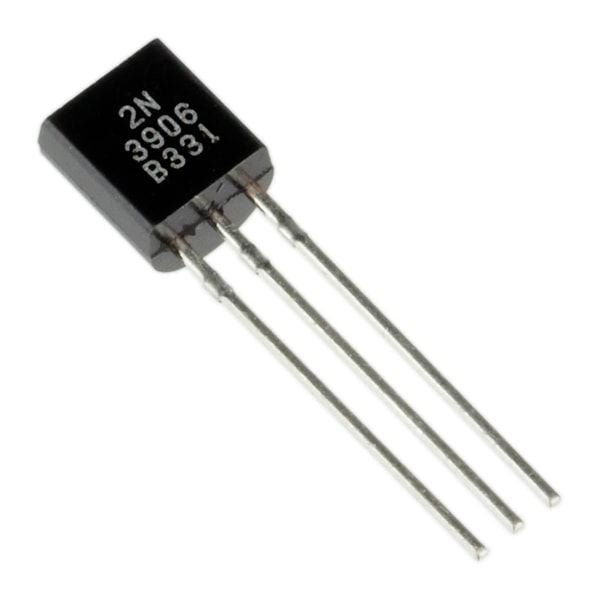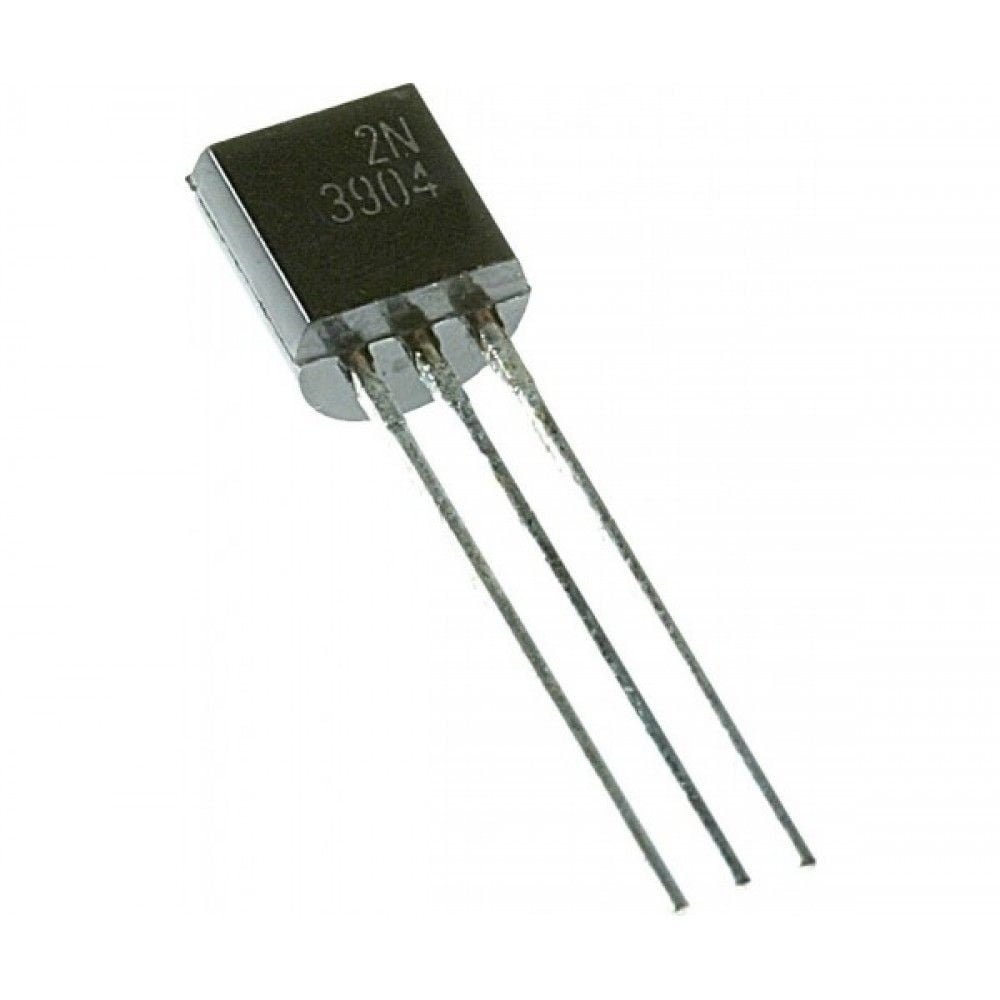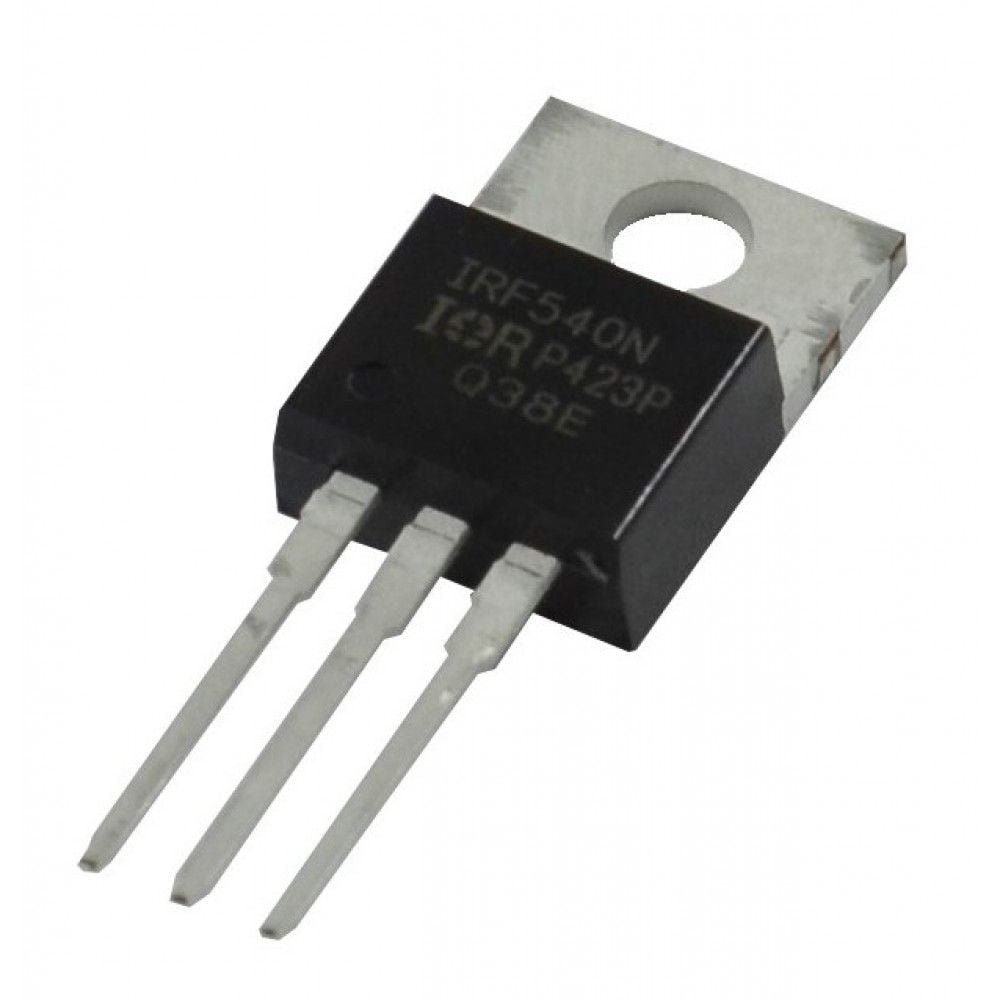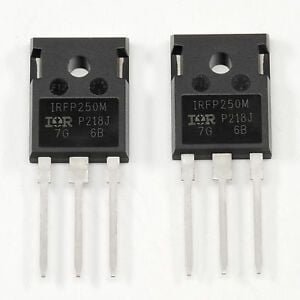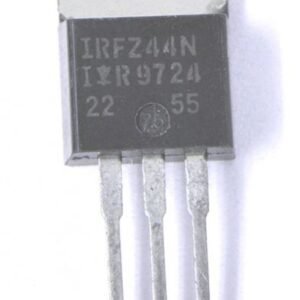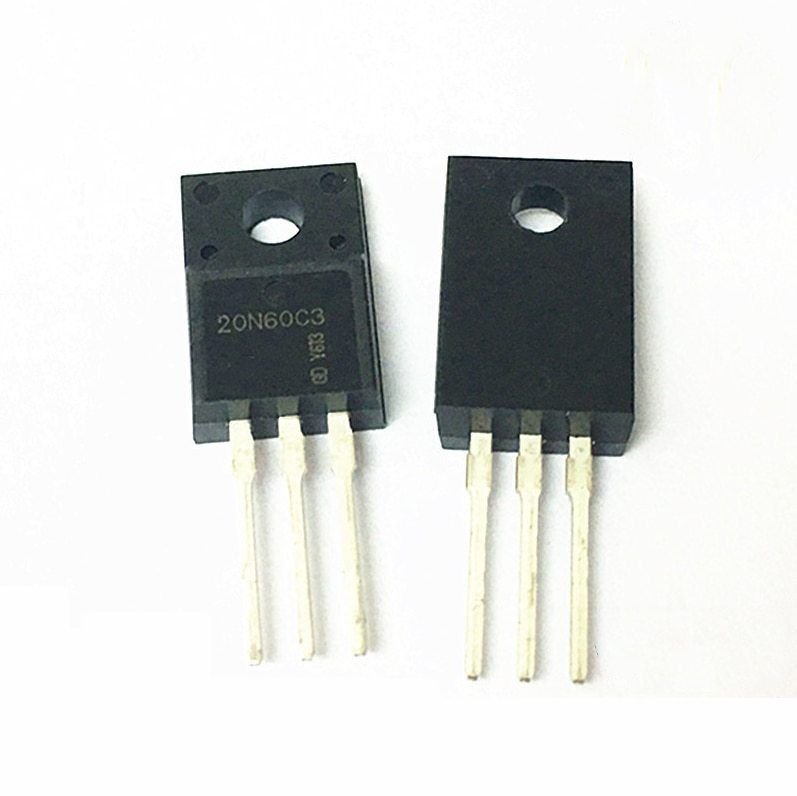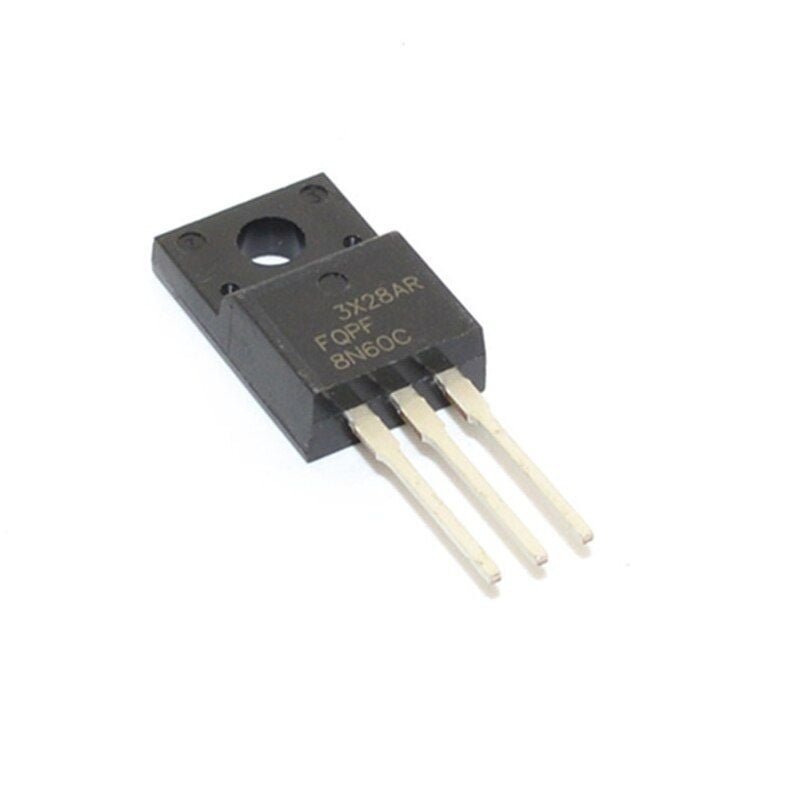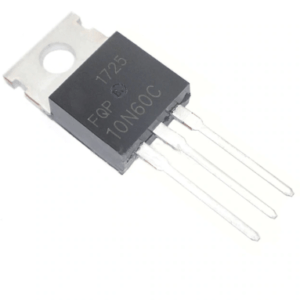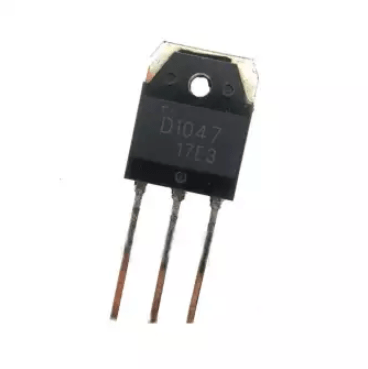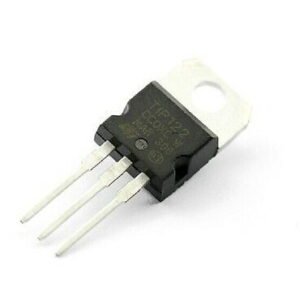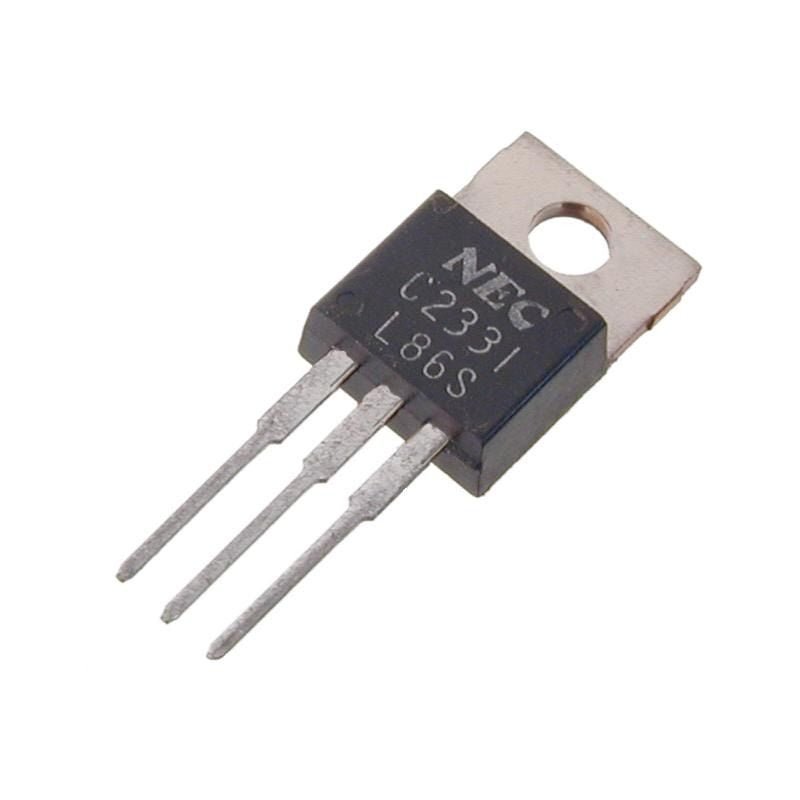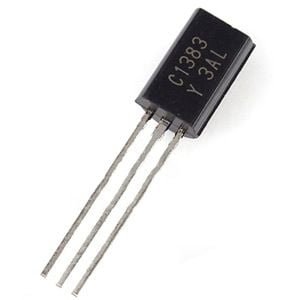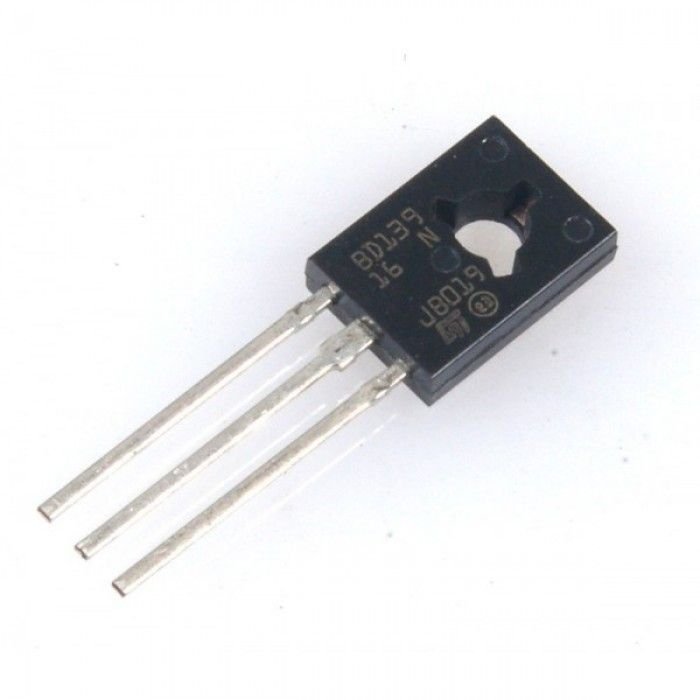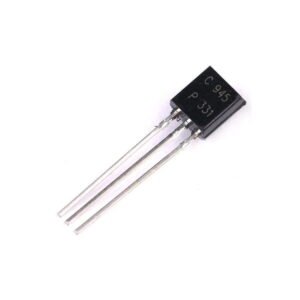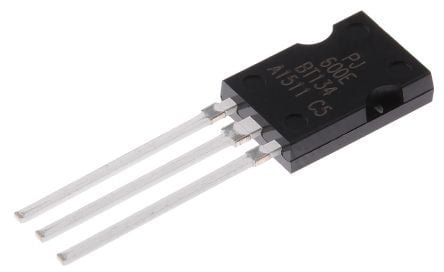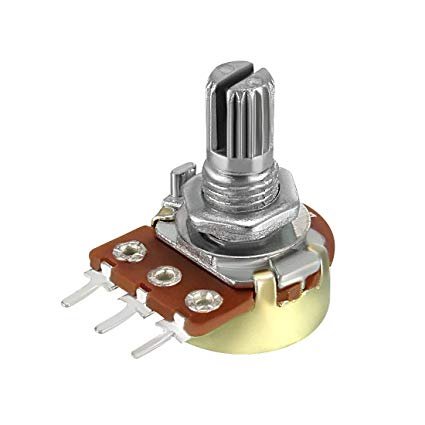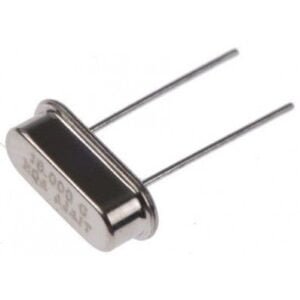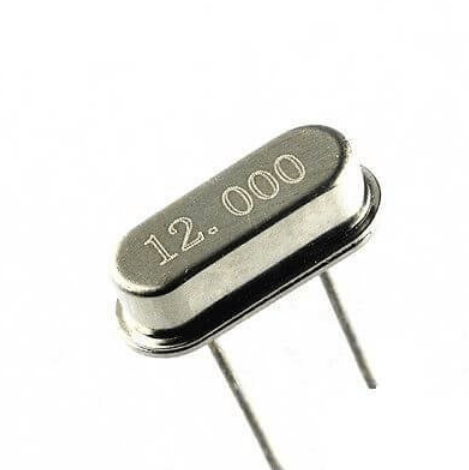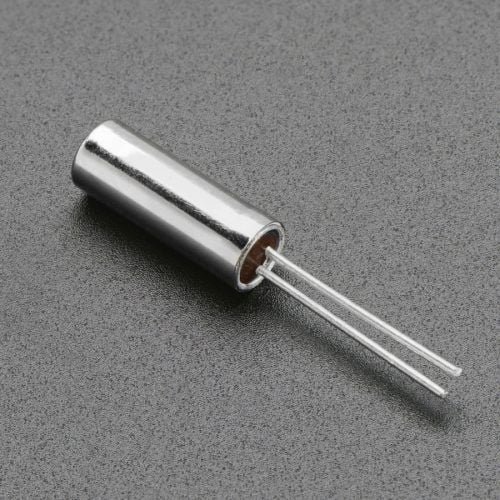-
- Bi-Polar PNP Transistor
- DC Current Gain (hFE) is 300 maximum
- Continuous Collector current (IC) is 200mA
- Emitter Base Voltage (VBE) is 5V
- Base Current(IB) is 5mA maximum
- Collector Emitter Voltage (VCE) is 40V
- Collector Base Voltage (VCB) is 40V
- Available in To-92 Package
-
- Bi-Polar NPN Transistor
- DC Current Gain (hFE) is 300 maximum
- Continuous Collector current (IC) is 200mA
- Base- Emitter Voltage (VBE) is 6V
- Collector-Emitter Voltage (VCE) is 40V
- Collector-Base Voltage (VCB) is 60V
- Available in To-92 Package
-
- Small Signal NPN Transistor
- Current Gain (hFE), typically 50 for small signal
- Continuous Collector current (IC) is 800mA
- Collector-Emitter voltage (VCEO) is 50 V
- Collector-Base voltage (VCB0) is 75V
- Emitter Base Voltage (VBE0) is 6V
- Turn on time is 40ns
- Turn off time is 250ns
- Available in To-92 Package
-
IRF4905 MOSFET is a P-Channel HEXFET Power MOSFET available in a TO-220AB package and is based on Advanced Process Technology. It is mainly used for fast switching purpose, capable of providing ultra-low on-resistance. This tiny device comes with three terminals called gate, drain and source where the gate terminal is used to control the current on remaining two terminals. The area between source and drain is known as a channel that is widely dependent on the voltage applied to the gate terminal.
-
- N-Channel Power MOSFET
- Continuous Drain Current (ID): 8A
- Gate threshold voltage (VGS-th) is 10V (limit = 20V)
- Drain to Source Breakdown Voltage: 500V
- Drain Source Resistance (RDS) is 0.85 Ohms
- Rise time and fall time is 23nS and 20nS
- Available in To-220 package
-
- N-Channel Power MOSFET
- Continuous Drain Current (ID) is 110A when VGS is 10V
- Minimum Gate threshold voltage 2V
- Drain to Source Breakdown Voltage: 55V
- Low On-Resistance of 8.0m
- Gate-Source Voltage is (VGS) is 20V
- Rise time is 101ns
- It is commonly used with Power Switching circuits
- Available in To-220 package
-
- N-Channel Power MOSFET
- Continuous Drain Current (ID): 10A
- Gate threshold voltage (VGS-th) is 10V (limit = 20V)
- Drain to Source Breakdown Voltage: 400V
- Drain Source Resistance (RDS) is 0.55 Ohms
- Rise time and fall time is 27nS and 24nS
- Available in To-220 package
-
- Dynamic dV/dt rating
- Repetitive avalanche rated
- Fast switching
- Ease of paralleling
- Simple drive requirements
-
- Fast Switching Applications
- Uninterruptible Power Supplies
- Battery Chargers
- Battery Management Systems
- Solar Battery Chargers
- Solar Uninterruptible Power Supplies
- Motor Driver Applications
- Telecommunication Applications
- Computer Related Applications
-
IRFP250 N-channel Power MOSFET
Original price was: ₨280.00.₨239.00Current price is: ₨239.00. Quick View- Repetitive Avalanche Ratings
- Dynamic dv/dt Rating
- Hermetically Sealed
- Simple Drive Requirements
- Ease of Paralleling
- Type Designator: IRF250
- Type of Transistor: MOSFET
- Type of Control Channel: N -Channel
-
- Package Type: TO-220
- Transistor Type: N Channel
- Max Voltage Applied From Drain to Source: 55V
- Max Gate to Source Voltage Should Be: 20V
- Max Continues Drain Current is : 49A
- Max Pulsed Drain Current is: 160A
- Max Power Dissipation is: 94W
- Minimum Voltage Required to Conduct: 2V to 4V
- Max Storage & Operating temperature Should Be: -55 to +170 Centigrade
-
20N60 belongs to the family of N-channel MOSFET. Its basically a power MOSFET that means it can handle certain levels of power. Its working principle is based on UTC technology. It provides the fast switching application and the minimum on state resistance as well. handling of high current, high speed of switching and low on sate resistance are its major features. Its real life applications include servo motor drivers, UPS, speed control of AC motor and many more.
-
- 8N60 N-Channel Power Mosfet Transistor
- Ultra low gate charge ( typical 28 nC )
- Low reverse transfer capacitance ( Crss= typical 12.0 pF )
- Fast switching capability
- Avalanche energy specified
- Improved dv/dt capability, high ruggedness
- Drain Current: ID= 7.5A at TC= 25
- Drain Source Voltage: VDSS= 600V
- Static Drain-Source On-Resistance: RDS(on)< 1.2
-
- Drain Current ID= 9.2A@ TC=25
- Drain Source Voltage : VDSS= 650V(Min)
- Static Drain-Source On-Resistance: RDS(on) = 0.83(Max)
- Avalanche Energy Specified
- Fast Switching
- Simple Drive Requirements
-
- Low saturation voltage
- Simple drive requirements
- High safe operating area
- For low distortion complementary designs
- Easy to carry and handle
-
The Bipolar Power Transistor is designed for use in general purpose amplifier and switching applications.
-
2SD1047 Bipolar NPN type Transistor.
-
TIP122 transistor designed for general purpose amplifier and low speed switching applications.
-
- Darlington medium-power NPN Transistor
- High DC Current Gain (hFE), typically 1000
- Continuous Collector current (IC) is 5A
- Collector-Emitter voltage (VCE) is 100 V
- Collector-Base voltage (VCB) is 100V
- Emitter Base Voltage (VBE) is 5V
- Base Current(IB) is 120mA
- Type NPN
- Collector-Emitter Voltage: 100V
- Collector-Base Voltage: 100V
- Emitter-Base Voltage: 5V
- Collector Current: 5A
- Collector Dissipation: 65W
- DC Current Gain (hfe): 1000
- Operating and Storage Junction Temperature Range: -65 to +150C
- Package: TO-220
-
- Type –NPN
- Collector-Emitter Voltage: 60V
- Collector-Base Voltage: 60V
- Emitter-Base Voltage: 5V
- Collector Current: 3A
- Collector Dissipation – 30W
- DC Current Gain (hfe) –40 to 320
- Transition Frequency – 5 MHz
- Operating and Storage Junction Temperature Range -55 to +150C
-
- Type –NPN
- Collector-Emitter Voltage: 400V
- Collector-Base Voltage: 450V
- Emitter-Base Voltage: 7V
- Collector Current: 10A
- Collector Dissipation – 80W
- DC Current Gain (hfe) – 10
- Operating and Storage Junction Temperature Range -55 to +150C
-
- Type: NPN
- Collector-Emitter Voltage, max: 140 V
- Collector-Base Voltage, max: 140 V
- Emitter-Base Voltage, max: 5 V
- Collector Current − Continuous, max: 10 A
- Collector Dissipation: 100 W
- DC Current Gain (hfe): 55 to 160
- Transition Frequency, min: 30 MHz
- Operating and Storage Junction Temperature Range: -55 to +150 °C
- Package: TO-3P
-
- Type Designator: 2SC2331
- Material of transistor: Si
- Polarity: NPN
- Maximum collector power dissipation (Pc), W: 1
- Maximum collector-base voltage |Ucb|, V: 80
- Maximum collector-emitter voltage |Uce|, V: 60
- Maximum emitter-base voltage |Ueb|, V: 8
- Maximum collector current |Ic max|, A: 0.7
- Transition frequency (ft), MHz: 30
- Collector capacitance (Cc), pF: 8
- Forward current transfer ratio (hFE), min: 40
- Noise Figure, dB: –
- Package of 2SC2331 transistor: TO92
-
C1383 is a Bipolar NPN type transistor which is used for low-frequency power amplification and driver amplification.
-
- Plastic casing NPN Transistor
- Continuous Collector current (IC) is 1.5A
- Collector-Emitter voltage (VCE) is 80 V
- Collector-Base voltage (VCB) is 80V
- Base Current (Ib) is 0.5A
- Emitter Base Breakdown Voltage (VBE) is 5V
- DC current gain (hfe) is 40 to 160
- Available in To-225 package
-
- 2sc925 well known as C945 NPN transistor.
- Max Voltage Collector Emmiter=50 V.
- Max Collector current=150 mA.
- Collector power dissipation: 400 mW.
- Japanese High-frequency amplifier NPN Transistor.
- Current Gain (hFE) is 70 to 700 (high linearity).
- Continuous Collector current (IC) is 150mA.
- Collector-Emitter voltage (VCEO) is 50 V.
- Collector-Base voltage (VCB0) is 60V.
- Emitter Base Voltage (VBE0) is 5V.
- Transition Frequency is 150MHz.
-
- Type – NPN
- Collector-Emitter Voltage: 25 V
- Collector-Base Voltage: 30 V
- Emitter-Base Voltage: 7 V
- Collector Current: 0.05 A
- Collector Dissipation – 0.4 W
- DC Current Gain (hfe) – 130 to 520
- Transition Frequency – 220 MHz
- Noise Figure – 6 dB
- Operating and Storage Junction Temperature Range -55 to +150 °C
- Package – TO-92
-
BT134 Triac – 600V – 4A (BT134-600E) Triac they are used in AC switching and control applications with current ratings from under 1A to 40A rms. Since TRIACs are bi-directional switching devices they are commonly used for switching AC applications. It has Maximum Terminal current: 4A, Max Terminal Voltage is 600 V, Gate trigger current: 25mA & On-state Gate voltage: 1.7V.
-
- 15V Positive Voltage Regulator
- Minimum Input Voltage is 17V
- Maximum Input Voltage is 35V
- Output Current: 1.5 A
- Internal Thermal Overload and Short circuit current limiting protection is available.
- Junction Temperature maximum of 125 degree Celsius
- Available in TO-220, TO-3 and KTE package
-
A potentiometer knob is an accessory that is used as a control knob for a potentiometer.
-
10K ohm Trimmer Trim Pot Variable Resistor 3296W 3296 Variable Resistor is a manually adjustable variable resistor with 3 terminals. Two terminals are connected to both ends of a resistive element, and the third terminal connects to a sliding contact, called a wiper, moving over the resistive element. The position of the wiper determines the output voltage of the potentiometer. The potentiometer essentially functions as a variable voltage divider. The resistive element can be seen as two resistors in series(potentiometer resistance), where the wiper position determines the resistance ratio of the first resistor to the second resistor. A potentiometer is also commonly known as a potentiometer or pot. The most common form of potmeter is the single turn rotary potmeter. This type of pot is often used in audio volume control (logarithmic taper) as well as many other applications. Different materials are used to construct potentiometers, including carbon composition, cermet, wirewound, conductive plastic or metal film.
-
- Multi-turn / Cermet / Industrial / Sealed
- 5 terminal styles
- Tape and reel packaging available
- Chevron seal design
- Mounting hardware available (H-117P)
- RoHS compliant
-
- Multi-turn / Cermet / Industrial / Sealed
- 5 terminal styles
- Tape and reel packaging available
- Chevron seal design
- Mounting hardware available (H-117P)
- RoHS compliant
-
Variable resistor 50K Potentiometer / Variable Resistor
Original price was: ₨50.00.₨39.00Current price is: ₨39.00. Quick ViewVariable resistor 50K Potentiometer / Variable Resistor (50K Ohm) is a manually adjustable variable resistor with 3 terminals. Two terminals are connected to both ends of a resistive element, and the third terminal connects to a sliding contact, called a wiper, moving over the resistive element. The position of the wiper determines the output voltage of the potentiometer. The potentiometer essentially functions as a variable voltage divider. The resistive element can be seen as two resistors in series(potentiometer resistance), where the wiper position determines the resistance ratio of the first resistor to the second resistor. A potentiometer is also commonly known as a potentiometer or pot. The most common form of potmeter is the single turn rotary potmeter. This type of pot is often used in audio volume control (logarithmic taper) as well as many other applications. Different materials are used to construct potentiometers, including carbon composition, cermet, wirewound, conductive plastic or metal film.
-
1M Ohm Rotary Potentiometer / Variable Resistor
Original price was: ₨50.00.₨39.00Current price is: ₨39.00. Quick View1M Ohm Rotary Potentiometer / Variable Resistor is a manually adjustable variable resistor with 3 terminals. Two terminals are connected to both ends of a resistive element, and the third terminal connects to a sliding contact, called a wiper, moving over the resistive element. The position of the wiper determines the output voltage of the potentiometer. The potentiometer essentially functions as a variable voltage divider. The resistive element can be seen as two resistors in series(potentiometer resistance), where the wiper position determines the resistance ratio of the first resistor to the second resistor. A potentiometer is also commonly known as a potentiometer or pot. The most common form of potmeter is the single turn rotary potmeter. This type of pot is often used in audio volume control (logarithmic taper) as well as many other applications. Different materials are used to construct potentiometers, including carbon composition, cermet, wirewound, conductive plastic or metal film.
-
500K Ohm Rotary Potentiometer / Variable Resistor
Original price was: ₨50.00.₨39.00Current price is: ₨39.00. Quick View500K Ohm Rotary Potentiometer / Variable Resistor is a manually adjustable variable resistor with 3 terminals. Two terminals are connected to both ends of a resistive element, and the third terminal connects to a sliding contact, called a wiper, moving over the resistive element. The position of the wiper determines the output voltage of the potentiometer. The potentiometer essentially functions as a variable voltage divider. The resistive element can be seen as two resistors in series(potentiometer resistance), where the wiper position determines the resistance ratio of the first resistor to the second resistor. A potentiometer is also commonly known as a potentiometer or pot. The most common form of potmeter is the single turn rotary potmeter. This type of pot is often used in audio volume control (logarithmic taper) as well as many other applications. Different materials are used to construct potentiometers, including carbon composition, cermet, wirewound, conductive plastic or metal film.
-
A potentiometer is a manually adjustable variable resistor with 3 terminals. Two terminals are connected to both ends of a resistive element, and the third terminal connects to a sliding contact, called a wiper, moving over the resistive element. The position of the wiper determines the output voltage of the potentiometer. The potentiometer essentially functions as a variable voltage divider. The resistive element can be seen as two resistors in series(potentiometer resistance), where the wiper position determines the resistance ratio of the first resistor to the second resistor. A potentiometer is also commonly known as a potentiometer or pot. The most common form of potmeter is the single turn rotary potmeter. This type of pot is often used in audio volume control (logarithmic taper) as well as many other applications. Different materials are used to construct potentiometers, including carbon composition, cermet, wirewound, conductive plastic or metal film.
-
A potentiometer is a manually adjustable variable resistor with 3 terminals. Two terminals are connected to both ends of a resistive element, and the third terminal connects to a sliding contact, called a wiper, moving over the resistive element. The position of the wiper determines the output voltage of the potentiometer. The potentiometer essentially functions as a variable voltage divider. The resistive element can be seen as two resistors in series(potentiometer resistance), where the wiper position determines the resistance ratio of the first resistor to the second resistor. A potentiometer is also commonly known as a potentiometer or pot. The most common form of potmeter is the single turn rotary potmeter. This type of pot is often used in audio volume control (logarithmic taper) as well as many other applications. Different materials are used to construct potentiometers, including carbon composition, cermet, wirewound, conductive plastic or metal film.
-
A potentiometer is a manually adjustable variable resistor with 3 terminals. Two terminals are connected to both ends of a resistive element, and the third terminal connects to a sliding contact, called a wiper, moving over the resistive element. The position of the wiper determines the output voltage of the potentiometer. The potentiometer essentially functions as a variable voltage divider. The resistive element can be seen as two resistors in series(potentiometer resistance), where the wiper position determines the resistance ratio of the first resistor to the second resistor. A potentiometer is also commonly known as a potentiometer or pot. The most common form of potmeter is the single turn rotary potmeter. This type of pot is often used in audio volume control (logarithmic taper) as well as many other applications. Different materials are used to construct potentiometers, including carbon composition, cermet, wirewound, conductive plastic or metal film.
-
A potentiometer is a manually adjustable variable resistor with 3 terminals. Two terminals are connected to both ends of a resistive element, and the third terminal connects to a sliding contact, called a wiper, moving over the resistive element. The position of the wiper determines the output voltage of the potentiometer. The potentiometer essentially functions as a variable voltage divider. The resistive element can be seen as two resistors in series(potentiometer resistance), where the wiper position determines the resistance ratio of the first resistor to the second resistor. A potentiometer is also commonly known as a potentiometer or pot. The most common form of potmeter is the single turn rotary potmeter. This type of pot is often used in audio volume control (logarithmic taper) as well as many other applications. Different materials are used to construct potentiometers, including carbon composition, cermet, wirewound, conductive plastic or metal film.
-
A potentiometer is a manually adjustable variable resistor with 3 terminals. Two terminals are connected to both ends of a resistive element, and the third terminal connects to a sliding contact, called a wiper, moving over the resistive element. The position of the wiper determines the output voltage of the potentiometer. The potentiometer essentially functions as a variable voltage divider. The resistive element can be seen as two resistors in series(potentiometer resistance), where the wiper position determines the resistance ratio of the first resistor to the second resistor. A potentiometer is also commonly known as a potentiometer or pot. The most common form of potmeter is the single turn rotary potmeter. This type of pot is often used in audio volume control (logarithmic taper) as well as many other applications. Different materials are used to construct potentiometers, including carbon composition, cermet, wirewound, conductive plastic or metal film.
-
A potentiometer is a manually adjustable variable resistor with 3 terminals. Two terminals are connected to both ends of a resistive element, and the third terminal connects to a sliding contact, called a wiper, moving over the resistive element. The position of the wiper determines the output voltage of the potentiometer. The potentiometer essentially functions as a variable voltage divider. The resistive element can be seen as two resistors in series(potentiometer resistance), where the wiper position determines the resistance ratio of the first resistor to the second resistor. A potentiometer is also commonly known as a potentiometer or pot. The most common form of potmeter is the single turn rotary potmeter. This type of pot is often used in audio volume control (logarithmic taper) as well as many other applications. Different materials are used to construct potentiometers, including carbon composition, cermet, wirewound, conductive plastic or metal film.
-
A crystal oscillator is an electronic oscillator circuit that uses the mechanical resonance of a vibrating crystal of piezoelectric material to create an electrical signal with a precise frequency. This frequency is often used to keep track of time, as in quartz wristwatches, to provide a stable clock signal for digital integrated circuits, and to stabilize frequencies for radio transmitters and receivers. The most common type of piezoelectric resonator used is the quartz crystal, so oscillator circuits incorporating them became known as crystal oscillators, but other piezoelectric materials including polycrystalline ceramics are used in similar circuits.
-
A crystal oscillator is an electronic oscillator circuit that uses the mechanical resonance of a vibrating crystal of piezoelectric material to create an electrical signal with a precise frequency. This frequency is often used to keep track of time, as in quartz wristwatches, to provide a stable clock signal for digital integrated circuits, and to stabilize frequencies for radio transmitters and receivers. The most common type of piezoelectric resonator used is the quartz crystal, so oscillator circuits incorporating them became known as crystal oscillators, but other piezoelectric materials including polycrystalline ceramics are used in similar circuits.
-
A crystal oscillator is an electronic oscillator circuit that uses the mechanical resonance of a vibrating crystal of piezoelectric material to create an electrical signal with a precise frequency. This frequency is often used to keep track of time, as in quartz wristwatches, to provide a stable clock signal for digital integrated circuits, and to stabilize frequencies for radio transmitters and receivers. The most common type of piezoelectric resonator used is the quartz crystal, so oscillator circuits incorporating them became known as crystal oscillators, but other piezoelectric materials including polycrystalline ceramics are used in similar circuits.
-
A crystal oscillator is an electronic oscillator circuit that uses the mechanical resonance of a vibrating crystal of piezoelectric material to create an electrical signal with a precise frequency. This frequency is often used to keep track of time, as in quartz wristwatches, to provide a stable clock signal for digital integrated circuits, and to stabilize frequencies for radio transmitters and receivers. The most common type of piezoelectric resonator used is the quartz crystal, so oscillator circuits incorporating them became known as crystal oscillators, but other piezoelectric materials including polycrystalline ceramics are used in similar circuits.
-
This is a 32.768 MHZ Crystal. This is a low cost crystal oscillator with oscillation frequency of 32.768 MHZ. Crystal are normally required to provide clock pulses to your micro-controller or other ICs which require external clock source. An oscillator crystal has two electrically conductive plates, with a slice or tuning fork of quartz crystal sandwiched between them. The crystal oscillator circuit sustains oscillation by taking a voltage signal from the quartz resonator, amplifying it, and feeding it back to the resonator. Quartz has the further advantage that its elastic constants and its size change in such a way that the frequency dependence on temperature can be very low.
-
6 MHz Crystal Oscillator is an electronic oscillator circuit that uses the mechanical resonance of a vibrating crystal of piezoelectric material to create an electrical signal with a precise frequency. This frequency is often used to keep track of time, as in quartz wristwatches, to provide a stable clock signal for digital integrated circuits, and to stabilize frequencies for radio transmitters and receivers. The most common type of piezoelectric resonator used is the quartz crystal, so oscillator circuits incorporating them became known as crystal oscillators, but other piezoelectric materials including polycrystalline ceramics are used in similar circuits.

